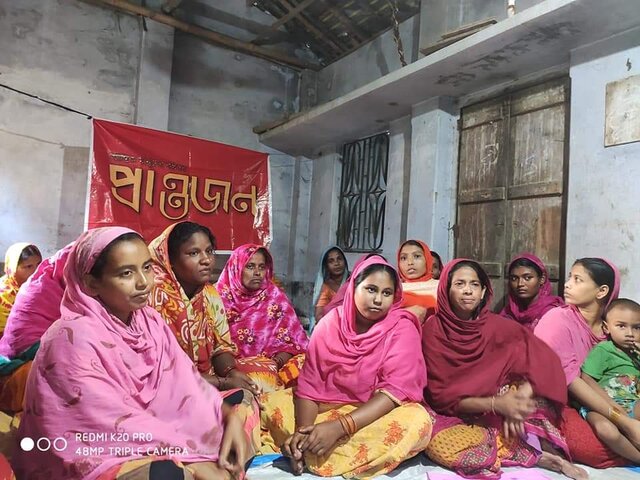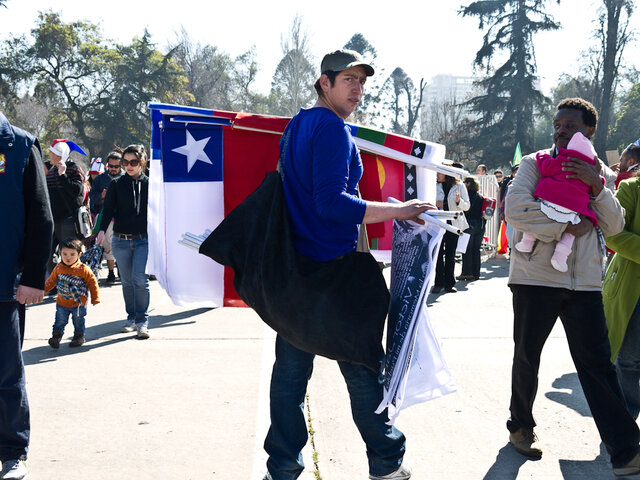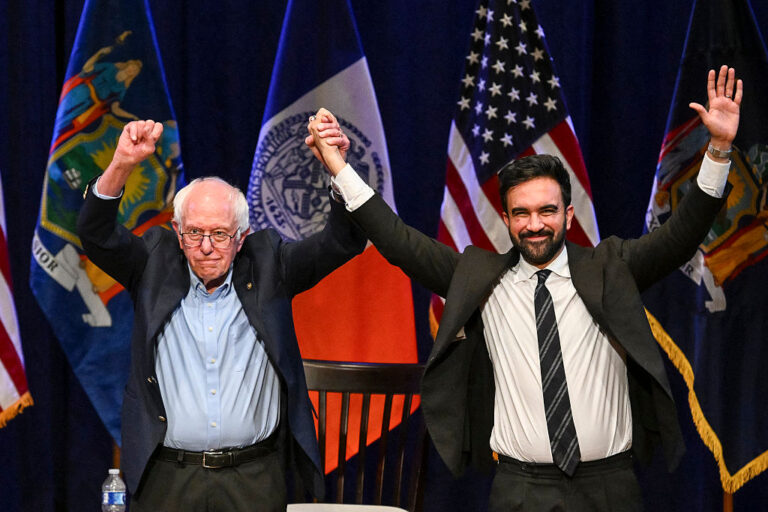
Abstract
Microfinance in India emerged with a promise—to democratise credit and empower the poor. But behind the polished rhetoric of “financial inclusion” lies a more complicated truth. This article explores the rise of microfinance not just as an economic tool but as a political instrument, one that often masks structural inequality with the language of opportunity. Microfinance, which originated in villages where the state withdrew, filled a void by not challenging the system, but by adapting the poor to it. The borrower, who was once a worker or peasant, became a “client.” The loan, no longer a right, became a product. Wrapped in the language of empowerment, microfinance built a parallel economy on the backs of informal labour, precarious livelihoods, and relentless repayment cycles. And yet, the narrative remained seductive: small loans, big dreams. But dreams, like debts, have interest. The central proposition posits that microfinance is not a panacea. It suggests that the promise of empowerment through credit is fundamentally limited when access is substituted for agency, and financial inclusion is decoupled from political inclusion. This article does not romanticise microfinance. It interrogates it. It asks who profits when poverty becomes a market, when solidarity is monetised, and when development is measured in EMIs. As we trace the evolution of this system, we confront a simple question with revolutionary weight: can you liberate the poor with credit or only with power?
Introduction
In support of the idea that microfinance can serve as a powerful tool in the fight against poverty, the United Nations declared 2005 the International Year of Microcredit. Global attention towards microfinance intensified further when Muhammad Yunus, a pioneer of the movement, was awarded the Nobel Peace Prize. The Nobel Committee endorsed the view that microfinance enables individuals to escape the cycle of poverty—an essential foundation for achieving lasting peace. Policymakers and aid organisations have embraced microcredit with near-euphoric optimism, hailing it as a panacea for poverty alleviation. However, the question remains: can microfinance truly deliver on these lofty promises?
Microfinance institutions provide credit to low-income individuals who are typically excluded from the formal banking system. These institutions are usually funded by international donors, NGOs, or commercial banks that offer capital at concessional or below-market interest rates. The funds are then distributed as small loans to poor individuals and small-scale domestic enterprises. In addition to credit, many microfinance institutions offer other financial services, including savings accounts, insurance, and emergency funds. They also engage in non-financial support by training borrowers in basic business management, financial literacy, and health awareness, thereby aiming to create a more sustainable path out of poverty.
Part A engages with the origins of microfinance and its metamorphosis into a structured industry. Part B scrutinises the state’s regulatory approach and the ideological position of financial self-reliance. Part C unpacks the theoretical contradictions of microfinance—its dual role as both emancipator and enforcer—and Part D draws from empirical experiences in India to illustrate these tensions in lived reality. Through this structure, the paper advances the central argument that microfinance, as it is currently practiced, risks institutionalising dispossession under the guise of empowerment.
1. Before the Buzzwords: Indigenous Lending Practices
Long before microfinance became a buzzword in policy circles or a feel-good phrase for impact investors, India’s poor had already built their own financial safety nets. In fact, they had no choice. Formal institutions, such as banks, cooperatives, and insurance providers, either failed to reach these individuals or did not recognise their needs. But the need for credit doesn’t wait for a passbook. And so, communities turned inward, creating intricate systems of informal finance that ran not on paperwork but on relationships. These indigenous models—Chit Funds, Rotating Savings Groups, and Village Lenders—were not perfect. They often reinforced caste hierarchies and patriarchal control. But they were alive, responsive, and embedded within local moral economies. Borrowing from a neighbour wasn’t just a transaction; it was an act of trust, of shame, of survival. If you defaulted, the penalty wasn’t foreclosure; it was exclusion from the community’s moral economy. No credit scores were necessary; reputation was enough. Enter the village sahukar, often demonised but deeply essential. He was the lender for the last resort and the first resort. Yes, his rates could border on predatory. But his presence filled a vacuum left by the state. Nationalised banks may have existed by name but not in spirit or staffing. The sahukar, for all his vices, at least knocked on your door— not to collect a loan but to offer one.
Economists, trained in formal sector analysis, often brushed aside these systems as archaic or inefficient. But efficiency is relative. When a woman needs money by evening for an emergency surgery, waiting three weeks for a bank’s KYC (know your customer) process isn’t “efficient”. In such moments, it is the informal lender—problematic, flawed, and human— who steps in. Of course, this informality came at a price. Marginalised borrowers, especially Dalits and women, were at the mercy of powerful structures. Loans came with strings, social, sexual, or otherwise. The distinction between a lender and an oppressor may become blurred. However, ironically, this exploitative system provided greater access than the formal banking system, which lacked the inclination to take advantage. What’s remarkable is that these systems sustained themselves not because they were well-regulated or tech-enabled, but because they were trusted. The poor turned to them not out of nostalgia but out of necessity. When institutions don’t work for you, you build your own. And build they did.
Ironically, when modern microfinance entered the scene, it didn’t invent anything new; it simply dressed the old in formal attire. Risk-sharing became a “joint liability”. The village moneylender’s intuition became a credit algorithm. The state formalised moral obligations through recovery schedules and group guarantees. In short, the State and the market took a centuries-old survival system, sterilised it, and rebranded it as “empowerment”. However, empowerment that lacks systemic change is merely a loan accompanied by positive public relations. And so, the cycle continues.
The poor have always borrowed, not just money, but dignity, stability, and time. The question is: from whom, and at what cost?
2. From State to Self-Help: The Rise of SHGs and NABARD
After independence, India flirted with “socialism”—not out of ideological romance, but because poverty was everywhere and capital was nowhere. The State, under Nehruvian planning, took it upon itself to play the banker of the poor. Cooperative credit societies, nationalised banks, and regional rural banks were rolled out with great fanfare. But like many government schemes, what looked impressive on paper struggled to crawl off the page. The poor, especially in rural India, found themselves standing outside the glass door of the formal credit system, knocking politely while bankers looked away. Officials missed lending targets, default rates alarmed them, and risk-averse staff found no motivation to lend to a barefoot woman without collateral. The collapse of the rural credit system was not sudden, but rather occurred with a bureaucratic sigh.
It was around this time that NABARD, established in 1982 as a refinancing and rural development agency, started rethinking the game. What if, instead of the State lending to the poor, the poor lent to each other? Enter the Self-Help Group (SHG) model. The genius of SHGs wasn’t economic; it was political. It was a neoliberal dream dressed in grassroots clothing: cut the state out of welfare and replace it with “community participation.” SHGs grouped women (usually women) into collectives of ten to twenty, encouraged them to save tiny sums, and slowly built lending pools from those savings. It was thrift, discipline, and bootstrap ideology in a sari.
The language was seductive. Empowerment. Participation. Ownership. But underneath the rhetoric, something quieter was happening: the state was retreating. Credit, once a right delivered via welfare schemes, became a responsibility outsourced to the poor themselves. Don’t ask us for loans; we will train you to lend to yourselves. To their credit, SHGs did bring change. Women gained social visibility, developed a habit of saving, and created emergency buffers in otherwise unforgiving economies. Meetings became spaces of solidarity and even subtle resistance. In some villages, SHGs transformed into political pressure groups, pushing for ration shops and road repair. They were not passive tools; they fought, negotiated, and often succeeded.
However, the model was not without its blind spots. The assumption that collective pressure would ensure repayment often translated into collective shame. If you missed an instalment, you weren’t just answerable to a bank; you were answerable to your neighbour, your cousin, and your best friend. Social capital, once a safety net, became a mechanism of surveillance. Moreover, SHGs demanded long hours of unpaid emotional and administrative labour, primarily from women who were already overburdened. Is managing a microcredit cell now added to the responsibilities of running a household, raising children, and working in the fields. Empowerment, in this model, started to look suspiciously like more work.
And yet, governments and NGOs loved it. The SHG model met all the criteria: it was affordable, had a significant impact, and focused primarily on women. It was the development sector’s equivalent of a home-cooked meal, cheap, humble, and idealised, regardless of who did the dishes. But when a system relies on the poor to fund and manage their own upliftment, the question must be asked: is this empowerment, or is it abandonment? SHGs were never just a financial experiment; they were a political compromise. And like all compromises, the real cost is often paid quietly by those who can least afford it.
3. The MFI Moment: Early 2000s and the Explosion of Credit
The world of microfinance underwent a transformation by the early 2000s. Gone was the image of the barefoot village woman holding hands in a dusty SHG meeting. The Microfinance Institution (MFI) was slick, tech-savvy, private, and unapologetically profit-oriented. What had begun as a social experiment was now dressed in business casual, and it meant business. Inspired by the Grameen Bank model and lubricated by venture capital, India saw an MFI boom like no other. Hundreds of institutions sprang up almost overnight, each promising to lend to the poor without collateral. “Credit is a human right,” they quoted Yunus.
The poor were no longer considered burdens to be uplifted; they were customers to be captured. Investors loved the model. The model boasted high repayment rates. There is minimal risk of default. Scalable operations. Everyone cheered, except the borrowers, who now found themselves juggling loans like circus performers, with no safety net in sight. Unlike SHGs, MFIs wasn’t concerned about your community work or your group solidarity. They cared about your ability to pay on Monday. Every Monday. If you couldn’t, your name would be listed, your dignity would be questioned, and your neighbours, who were roped in as co-guarantors, would be forced to act as enforcers. This was financial inclusion with teeth. Loan officers, driven by monthly disbursal targets, roamed villages like salesmen on caffeine. They didn’t stop to ask what the loan was for. Start a shop? Buy a goat? Marry off a daughter? No problem. The money would reach its destination more quickly than a ration card, but with significantly more restrictions. On paper, the numbers dazzled. However, it’s important to remember that statistics don’t always accurately reflect reality. Behind the statistics were women pawning jewellery, skipping meals, or borrowing from informal lenders just to make their EMIs. The entire model relied on shame and social pressure, not on capacity or consent. A woman would rather default on herself than on her reputation.
The State, conveniently, watched from the sidelines. Here was a private solution to a public failure. What are the benefits of investing in rural employment compared to providing loans? Why strengthen public banks when MFIs are flooding the countryside with cash? It was the neoliberal dream: financialize the poor, then call it empowerment. And yet, MFIs sold the illusion well. Their websites were filled with pictures of smiling women and stories of transformation. But what they rarely showed was the burnout—the breakdown—and the quiet despair of being trapped in a cycle of debt dressed up as opportunity.
Microfinance, in this phase, ceased to be about poverty alleviation. It became a market segment. The poor were no longer a problem to be solved; they were a portfolio to be managed. The industry spoke of “financial products”, “customer onboarding”, and “risk management”. The language changed. So did the motive.
If SHGs were a call to self-reliance, MFIs were a lesson in disciplined consumption. You could borrow, but only to pay back more. And if you faltered? Don’t worry; there’s always another loan waiting.
4. Cracks in the Dream: Andhra Pradesh Crisis, 2010
Every dream has its breaking point. For India’s microfinance fairy tale, it came in 2010, in the state of Andhra Pradesh. A region that had once been showcased as the microfinance capital of the country. What had started as a story of empowerment unravelled into one of exploitation, suicide, and systemic failure. The crisis wasn’t just a financial breakdown; it was a moral reckoning. By this time, Andhra Pradesh was saturated with MFIs. Dozens of institutions were tripping over each other to hand out loans—often to the same borrowers, again and again. There was no real due diligence, only quotas to meet. If a woman had already taken three loans, she was still eligible for a fourth, because hey, her neighbours would guarantee it. And if the neighbours refused? Well, shame has always been cheaper than collateral. Loan officers began to resemble debt collectors more than social workers. Weekly repayments became religious rituals, and defaulting was a social sin. The emotional violence was brutal, public humiliation, threats of property seizure, even intimidation. In some cases, the line between persuasion and harassment blurred fatally. Reports began to surface of borrowers taking their own lives under pressure. Women were selling their utensils, withdrawing children from school, mortgaging dignity. Over 70 suicides were linked to coercive microfinance practices in the state. It was the kind of irony you could choke on, loans meant to liberate were now killing people.
The Andhra Pradesh government, under mounting public pressure, swung into action, but not with surgical precision. Instead, it slammed the brakes with a sweeping ordinance in October 2010. MFIs were required to register with district authorities, cease door-to-door collections, and stop lending without government oversight. The industry, once bloated with unchecked growth, suddenly found itself gasping. Investors panicked. Portfolios crashed. National-level MFIs, some freshly listed on stock exchanges, watched their valuations nosedive. For an industry addicted to speed and scale, this was rehab by force. Many called it a witch hunt; others called it long overdue. What nobody could deny was that the Andhra crisis pulled the curtain back on microfinance’s darker underbelly. It also revealed a deeper truth: that poverty is not a gap to be bridged with credit. It is a condition, shaped by caste, gender, landlessness, and state withdrawal. Microfinance, when stripped of its marketing gloss, had turned poverty into a business model, where profit was tied not to progress, but to repayment.
The crisis also forced a hard question: where was the regulator? The Reserve Bank of India, which had previously maintained a distance from microfinance, was suddenly compelled to take action. What followed was a scramble for legitimacy: new regulations, revised codes of conduct, and self-regulatory organisations. However, the damage had already occurred. Trust, between borrower and lender, government and institution, lay fractured. And yet, even in the wreckage, MFIs survived. They rebranded, recalibrated, and returned. The crisis, like all crises under capitalism, became a lesson in risk, not ethics. Once again, the poor bore the brunt of the cleanup. Ultimately, the banker is never the first to suffer when the credit bubble bursts.
5. Course Correction: Regulation, Retrenchment, Reinvention
After the Andhra Pradesh crisis of 2010 tore the sheen off microfinance, the industry found itself cornered, morally bankrupt, financially shaken, and politically unpopular. The mess had become too big to ignore, even for a system trained to look the other way.
The Reserve Bank of India (RBI) finally stepped onto the stage after maintaining a hands-off approach for years. The Reserve Bank of India formed the Malegam Committee in 2011 to recommend a regulatory framework. The report maintained a measured tone, yet its subtext was scathing: the sector had grown too fast, too loose, and far too hungry for returns. The dream of financial inclusion had become a hustle, and someone had to clean up the mess. The RBI acted. It capped interest rates, introduced loan limits, and restricted the number of MFIs a borrower could approach. The creation of a new category, Non-Banking Financial Company–Microfinance Institution (NBFC-MFI), finally brought microfinance under formal regulatory scrutiny. It felt as though the sector received a directive to mature beyond its teenage rebellion.
These reforms were not just bureaucratic footnotes. They represented an ideological shift—from market-led chaos to state-guided capitalism. Framed as “customer protection”, the regulation also aimed to restore the credibility of microfinance among investors and global partners. This was not a U-turn. It was a cosmetic course correction dressed up as reform. In parallel, the sector underwent a period of strategic retrenchment. Many smaller MFIs shut shop. Larger players consolidated. The language softened. Words like “empowerment” gave way to “risk assessment.”. Women were no longer “change agents”; they were “clients”. The revolution was rebranded. But microfinance wasn’t just retreating. It was reinventing itself for survival. Technology entered the frame. MFIs embraced credit-scoring algorithms, digital KYC, and app-based repayments. The narrative underwent a transformation: the impoverished were now not just creditworthy, but also digitally creditworthy. Meanwhile, the Government of India wasn’t sitting idle. SHG-bank linkage programmes were scaled up, and institutions like MUDRA were born, supposedly to democratise access to small loans. But these programs, too, operated within the same financialized logic: give poor people loans and call it development. What was missing—still missing—was any serious attempt to question why the poor need so many loans in the first place.
Today, microfinance traverses a delicate balance. It is neither a saviour nor a villain. It has been regulated, repackaged, and reabsorbed into the bloodstream of neoliberal India. It is safer, perhaps, but no more radical than before. The structure remains: the poor borrow, repay, repeat. Only now, the cycle runs smoother. More efficient. Less visible. Course correction? Maybe. But one must ask, what course was it on in the first place?




